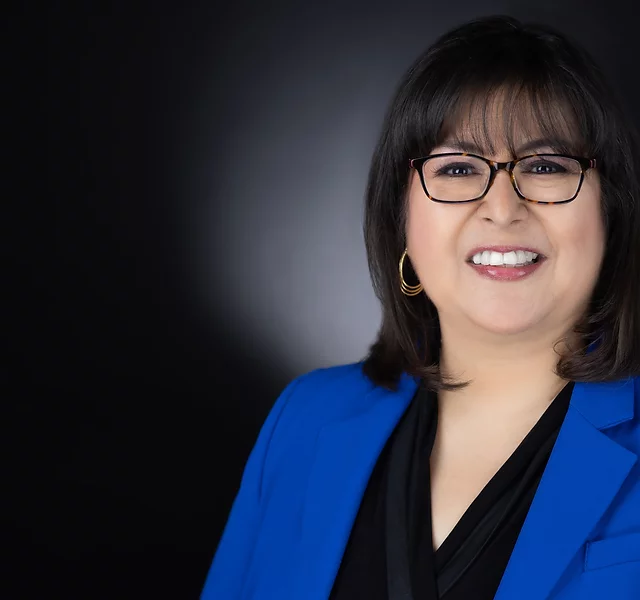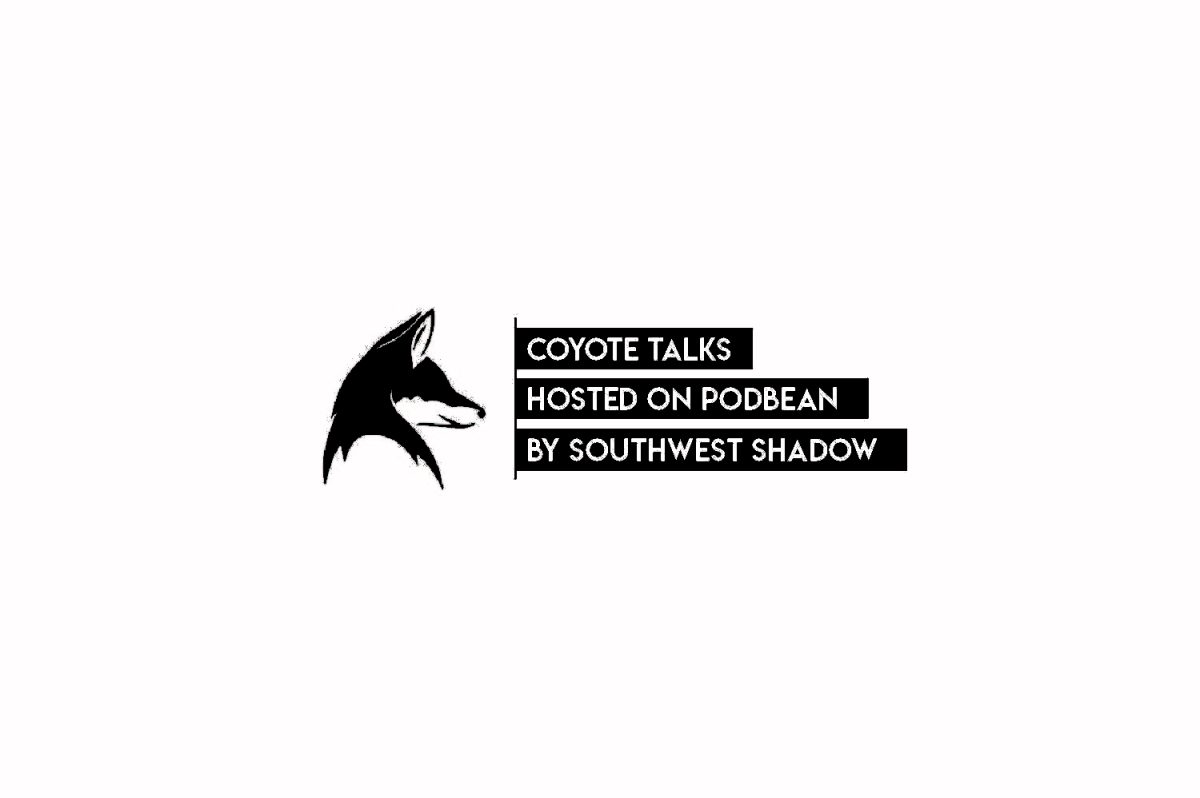Talking one-on-one with Irene Bustamante Adams
Hear what the District 14 School Board candidate plans to do
November 3, 2022
With the upcoming general election, many political seats are up for grabs. Former assemblywoman Irene Bustamante Adams is on the ballot to challenge incumbent Danielle Ford to represent District 14 on the Clark County School District Board of Trustees. Bustamante Adams finished first in the primary election in June and could change the current voting block. Continue reading to learn more about candidate Bustamante Adams.
1. What are the most important issues facing the district right now? What would you do to provide solutions to these problems?
The number one persistent challenge facing CCSD is the community’s loss of faith in its effectiveness. As a result, they have lost credibility in tackling student achievement, addressing access and equity barriers, and developing a strategy to retain teachers. Community stakeholders have disengaged from participating with the CCSD Board.
Some ideas to address this challenge are [to] intentionally work with Las Vegas Global Economic Alliance, Chambers of Commerce, and other business-focused groups to align education, workforce, and economic development. [To] have consistent presentations to local municipalities, including Clark County, on CCSD’s progress for improving outcomes and open the lines of communication to solve the problems together. [Hold] consistent presentations to Southern Nevada state legislators to keep them informed of the progress and open the lines of communication to build trust and transparency. [I will] be intentional in working with the Nevada State of Board of Education to improve student achievement and educator effectiveness, and [work to] build relationships with student leaders/parent groups and get them engaged to help develop solutions.
2. With education staffing shortages existing nationwide, do you have any unique solutions that you could share with the student body?
There is one promising practice currently underway in a few states called Teacher Apprenticeship Program. The case studies conducted have demonstrated that short-term needs can be filled and create sustainable career pathways into education. It is a “grow your own” concept. School districts can offer attractive benefits to recruit long-term substitutes. These individuals can increase their knowledge and skills through the completion of micro-credentials and mentorship by a master teacher. The Department of Labor (DOL) has recognized this as a unique effort to help with [the] staffing shortage. The DOL person leading the effort is from Southern Nevada.
3. Referencing the previously mentioned staffing shortages, do you have any alternative staffing ideas to reintroduce out-of-classroom learning experiences such as field trips?
The Governor’s Office of Workforce Innovation did a pilot on teacher externships which I believe is a promising practice. It gives teachers an opportunity to connect with employers in emerging industries. The teachers are given a stipend and it involves hands-on learning for the employer.
Another alternative is the deployment of Nepris which is an online connection platform that makes it easy for teachers to connect with industry professionals. Through this web-based tool, industry professionals can share their experiences with students and teachers. It helps to integrate academic skills with soft skills and industry-specific competencies that drive the 21st century workforce.
4. Specifically focused on school violence, what can you say to students who feel unsafe going to school in lieu of recent events?
Safety at school is critically important for students and staff. CCSD has established and increased new safety measures. As a student, I would monitor quarterly to ensure that the new measures are working. I would take advantage of meeting with the high school counselors and share any fears or incidents that happen. I would also encourage students to communicate with their parents about any anxiety caused by the recent incidents. Lastly, I would encourage the students to get involved on campus to promote no tolerance for violence at school.
5. How does being one of the first Hispanic female legislators elected in the state set you apart from other candidates?
In my public service as a Nevada State Assemblywoman, I was quickly placed into a leadership position during my freshman year within the Government Affairs Committee. This and other experiences, such as serving on Ways and Means, Chair of Commerce and Labor, Chair of Budget Subcommittees, and Chair of Taxation, gave me the well-rounded experience of working collaboratively with several stakeholders. During my 18-plus years at MGM MIRAGE, I was responsible for developing and assisting in the oversight of new initiatives that involved award-winning national projects. Each of these projects required policies to be developed and shared across the entire organization, helping to facilitate multiple gaming properties to support a unified mission, vision, and monitoring of budgets.
My position as Deputy Director and Chief Strategy Officer for Workforce Connections allows me to continue my service to Southern Nevada by aligning education, workforce, and economic development for the region’s needs. In just three short years, I assisted the new executive director in enhancing and elevating the organization to an award-winning national entity. These accomplishments and being one of the first Latinas to serve in the Nevada Legislature demonstrate that I have a passion for public service, and I am willing to push myself out of my comfort zone.
6. Could you tell me more about Workforce Connections, and how that could be helpful for high school students?
Every state has at least one local workforce development board (LWDB). In Southern Nevada, the LWDB is called Workforce Connections. We oversee four counties Clark, Nye, Lincoln and Esmeralda. The mission of the organization [is] to connect employers to a ready workforce. The federal government allocated a certain amount to the LWDB to help meet the mission by providing funding for training and employment. These funds are used to remove barriers to employment for the hard to serve individuals. For example, if a student made some bad decisions and got involved with the juvenile justice system, he may benefit from being involved with Workforce Connections. We could use funds to provide work experiences (job shadowing, internships etc.) for the individual to increase his skills and become a productive member of society. Other barriers like transportation to his job, clothing requirements to perform the job, a work card or other documents needed to start are examples of how we could help.
7. Why would you be a better choice for students than the other people running for this seat?
I have an extensive background as a corporate executive of diversity, a former state legislator, and seasoned workforce development professional. Each role involved focusing on data-driven decisions that impact the K-12 system. I will bring that unique skill set to the table and advocate for student success. In addition, I will use the same skills to build my relationship with parents, students, administrators and other community stakeholders.
8. What do you say to students who cannot participate in the election, but will be heavily affected by your decisions on the Board of Trustees?
I would say that as a student you can be involved in the election. There are many ways to be engaged besides actually voting. You can help support your candidate by knocking on doors, making phone calls to voters, addressing thank you notes for signatures and many more.
My daughters have been involved in every campaign that I have run since they were kids and now, they are well-informed young adults. I would also extend invitations to the Board of Trustees to attend school events, have them participate on a panel, or judge an event. The goal is to build a relationship so that there can be a flow of communication.
9. Can you tell me more about your motivation to join the School Board?
Several family members passed away during the pandemic, reminding me of how fragile life is and my desire to leave behind a great legacy as a public servant. I am also a new grandmother to a three-year-old little boy who will soon be entering the CCSD Public School System. Therefore, I feel compelled to use my gifts and talents to advance a vision of achievement where all students are successful.
10. What type of school district do you hope your grandson can be a part of?
My dream is that he will have the access and equity to receive a broad level of foundational knowledge, be taught to be a lifelong learner, and acquires the ability to become an engaged citizen so he can add value to their community.
*Multiple requests were made to interview Danielle Ford. Requests for interviews were not returned.








